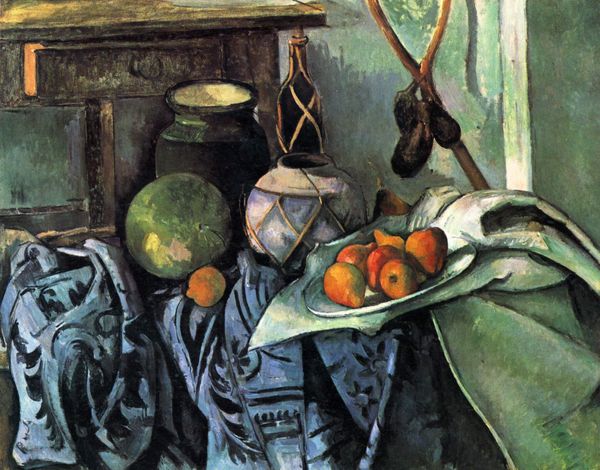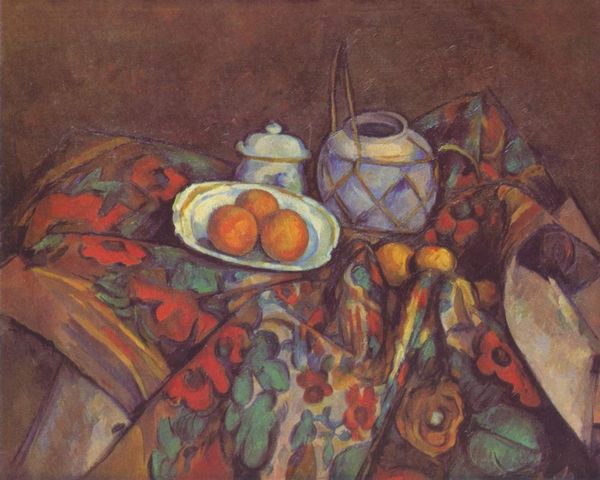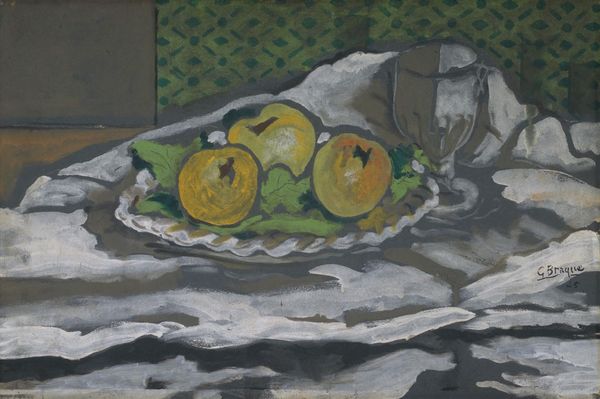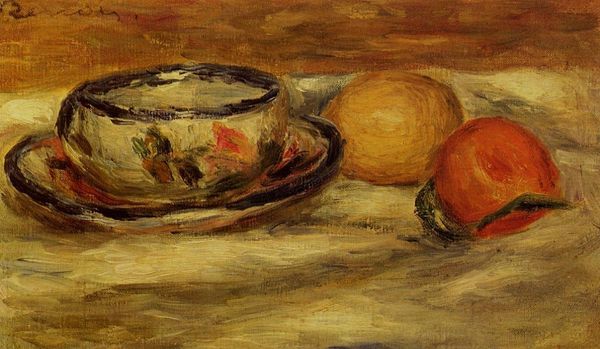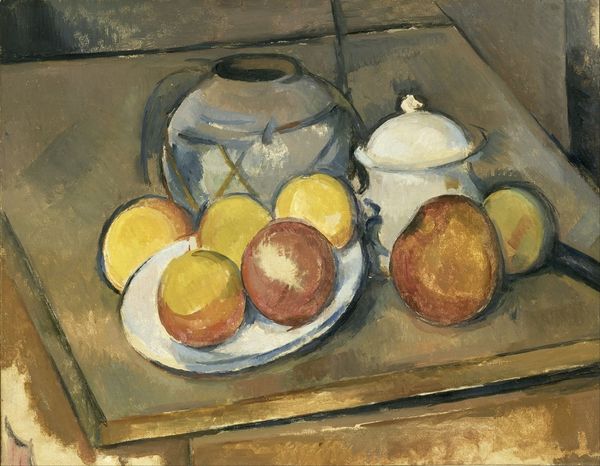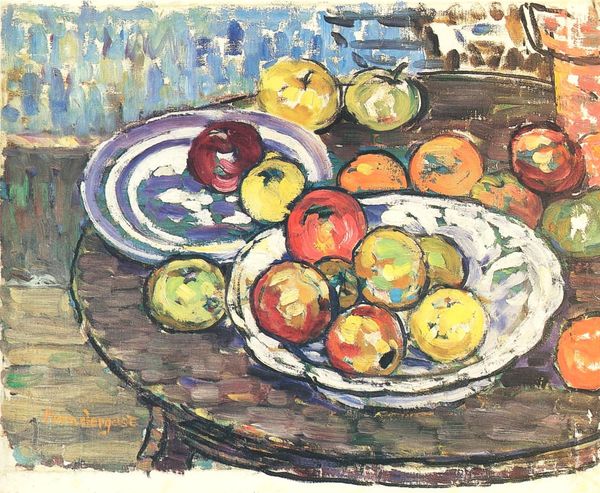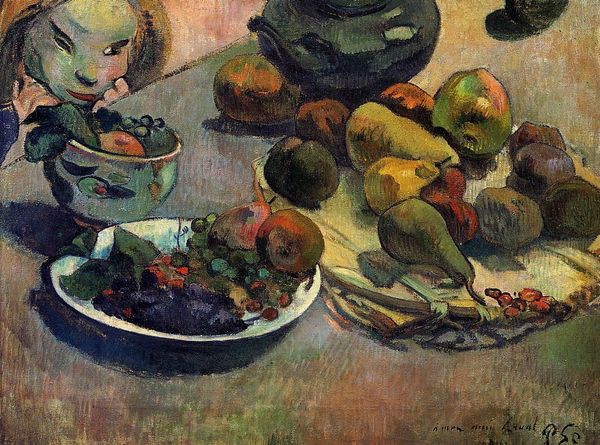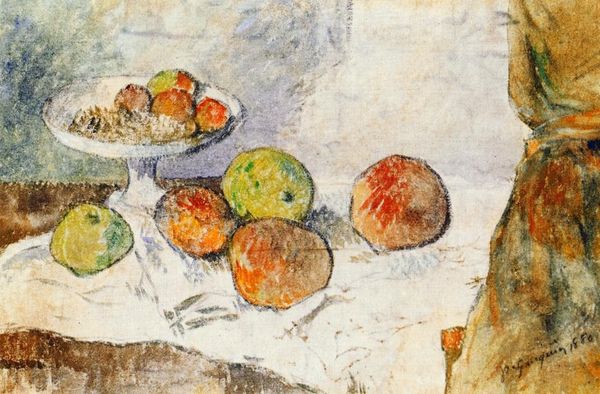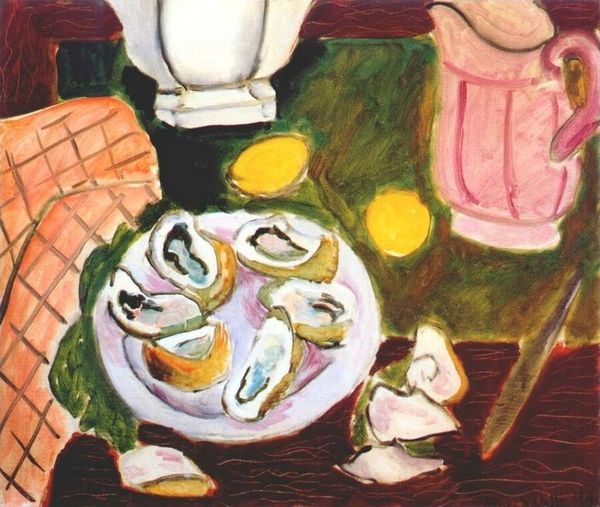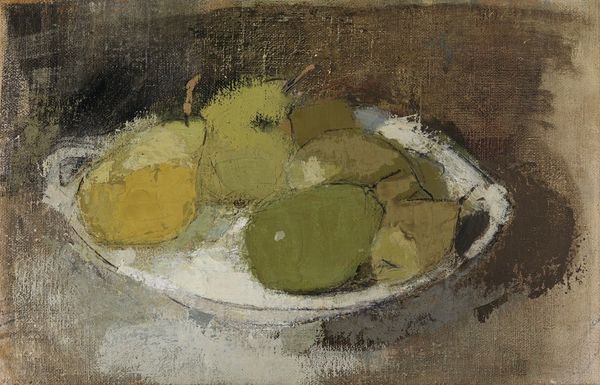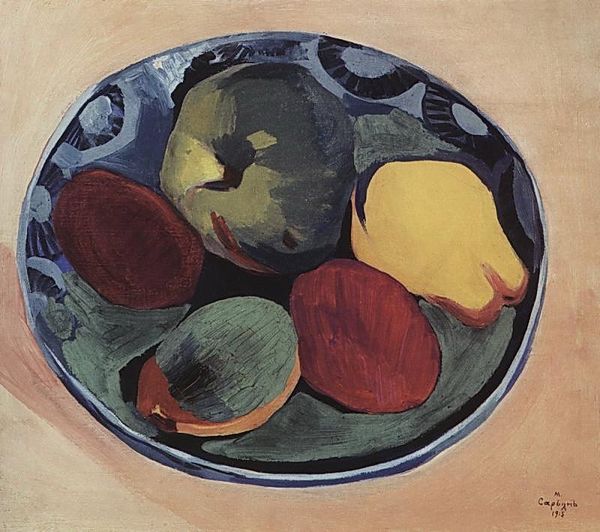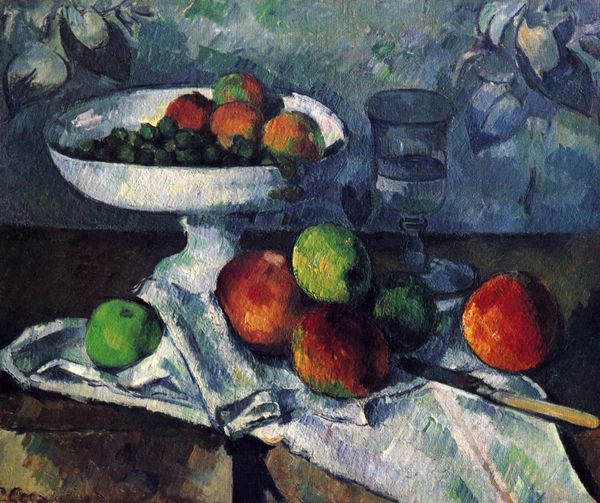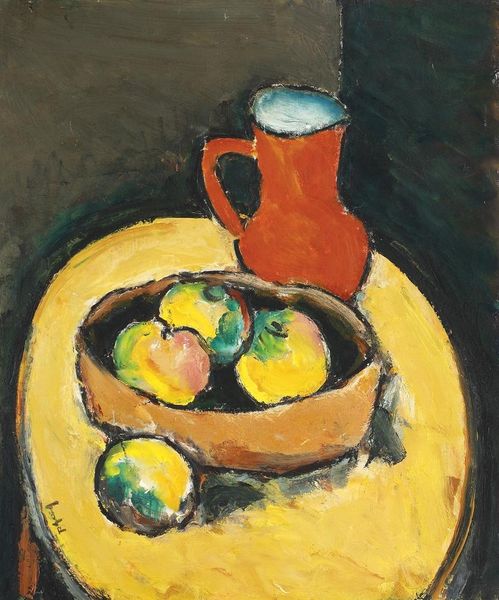
painting, oil-paint
#
still-life
#
painting
#
oil-paint
#
figuration
#
oil painting
#
modernism
Copyright: Istvan Ilosvai Varga,Fair Use
Curator: It’s “Green Quinces,” painted in 1936 by Istvan Ilosvai Varga. It’s an oil painting, a modernist take on the still life genre. I find something almost melancholic about it, the subdued greens and browns… What strikes you initially? Editor: It does have a somber feel, doesn't it? I think the composition, with the slightly off-center placement of the plate and cup, contributes to that. I’m wondering, what does this say about society and how do you interpret its social undertones or potential message in today's world? Curator: I think it's important to look at the context of 1936. Modernism was a time of great upheaval. Artists questioned tradition and the very nature of representation. This seemingly simple still life emerges, not as mere decoration, but a challenge. What does it mean to center humble, almost sour fruits in a world rapidly changing, shadowed by impending war? Think of it as a quiet resistance, focusing on the fundamental—food, sustenance—when the world seemed on the brink of collapse. Does this shift your perspective on the artwork? Editor: It does, yes. The quince becomes a symbol, almost. Were still lifes typically viewed with such depth at that time, or is Varga imbuing it with something more? Curator: Often, still lifes were seen as decorative or exercises in technical skill. But modernists like Varga imbued them with deeper meanings. Consider how economic disparities impacted what people could afford, too. I’d even propose the color green becomes less a descriptor, and more an identifier, and subtle nod toward something unripened, perhaps even the artist's outlook on his country's sociopolitical maturity. Does the muted color scheme now represent more than a reflection of natural light? Editor: Absolutely! The symbolism transforms the work. It’s much more layered than I initially thought. Curator: And that’s the power of considering context, of bringing social history into the viewing experience. Editor: Thank you for sharing a different way to approach analyzing this! I am excited to incorporate this mindset.
Comments
No comments
Be the first to comment and join the conversation on the ultimate creative platform.
